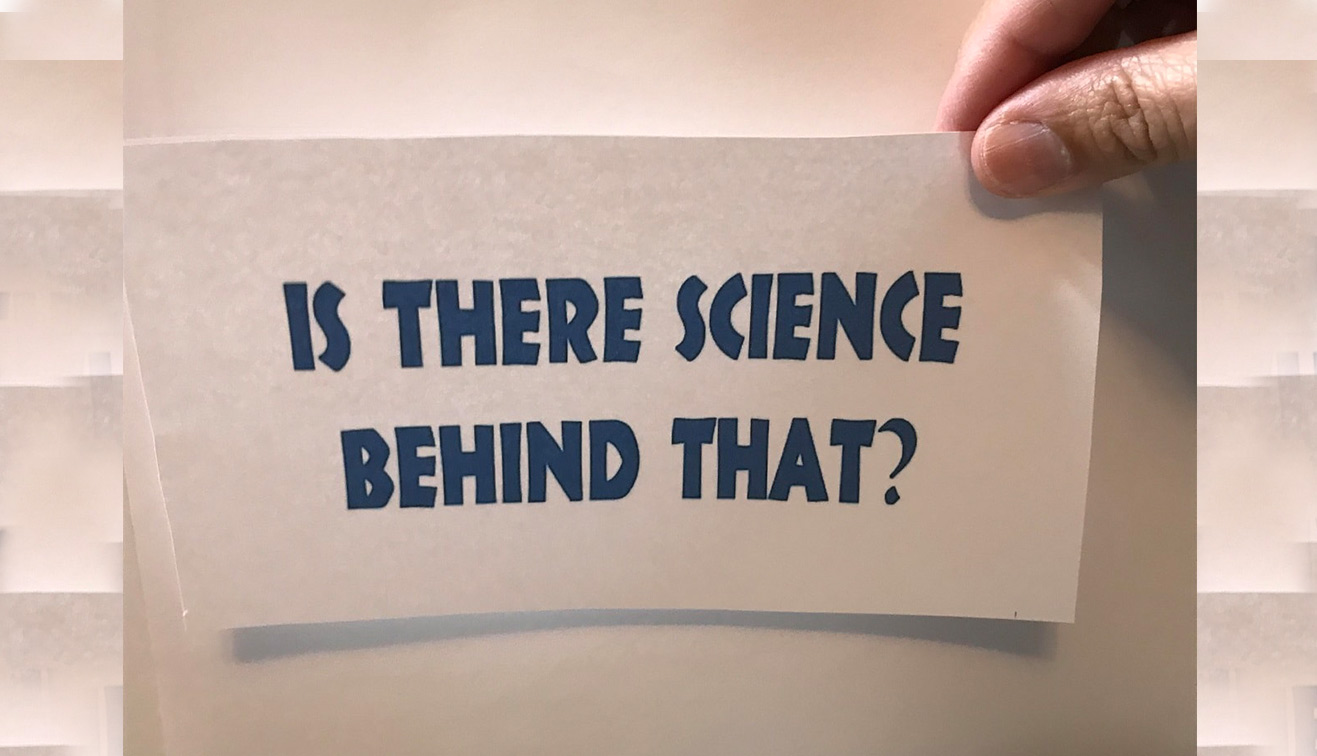The Study Of The Ceramic Coatings Science
The study of ceramic coating is a complicated one as it contains multiple facets and steps, making it really difficult to understand it to our familiar audience. In this blog, we will discuss the creation of ceramic coating, including the science behind it. We will delve deeper into it, but don’t worry; we have done it in a way so that you can understand it easily. Believe me, many of the people who work here don’t necessarily understand it either.
Ceramic Coatings: What Are They Exactly?
Also known as glass coatings, nano-coatings, silica coatings, and hydrophobic coatings are semi-permanent, non-metallic, inorganic protective clear coats that can be applied on a variety of surfaces. Ceramic coatings are used in various industries, including the automotive, maritime, and architectural fields, mainly because they are simple to clean and protect against the effects of the elements.
The following ingredients make up the fundamental components of any ceramic coating:
- resin (polymeric material that build-up the backbone of coating);
- solvent(s); and
- additives.
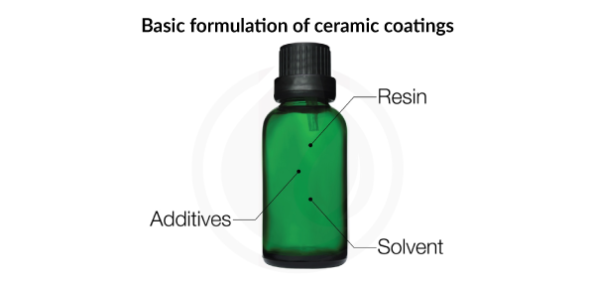
A ceramic coating method will often include resin as an essential component. Polymers based on silicone, such as polydimethylsiloxanes, are examples of commonly used resins (PDMS). PDMS is frequently utilised in formulating ceramic coatings because it is non-toxic, inert, non-flammable, optically clear, possesses excellent thermal properties, and is UV stable.
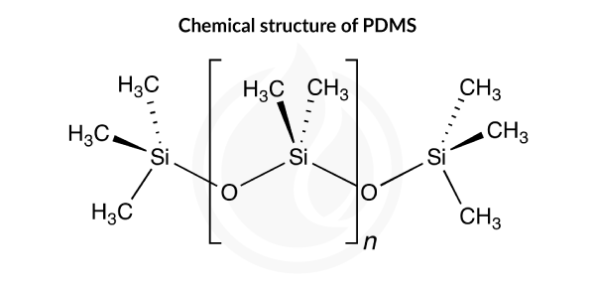
In most cases, PDMS is used as the primary component in a ceramic coating system, which gives the coating its hard, glossy, and water-repellent qualities. The following diagram illustrates the structure and the production of a ceramic coating based on PDMS.
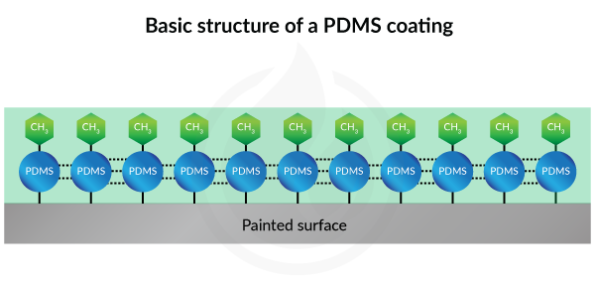
Unfortunately, PDMS by itself has weak adherence to paints, plastics, metals, and wood substrates. This is because PDMS is made of polydimethylsiloxane. PDMS can develop a bond between PDMS and the substrate to form a semi-permanent thin protective film. This is made possible by adding silane additives to the formulation, which increases adhesion. An example of this can be seen in the image below.
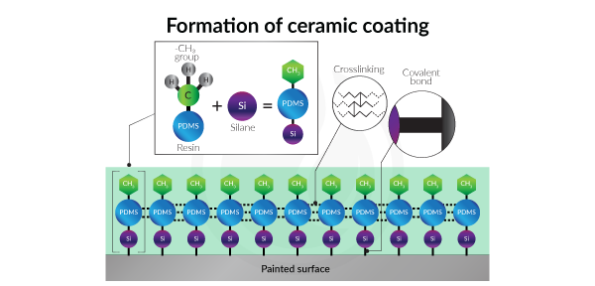
The silane functional group (-Si-O-R) reacts with the surface to create a potent covalent bond, improving both the overall coating adherence and the ceramic coating’s longevity, particularly when it is subjected to mechanical abrasions such as washing and rubbing. In addition, the silane functional group helps to improve overall coating adhesion.
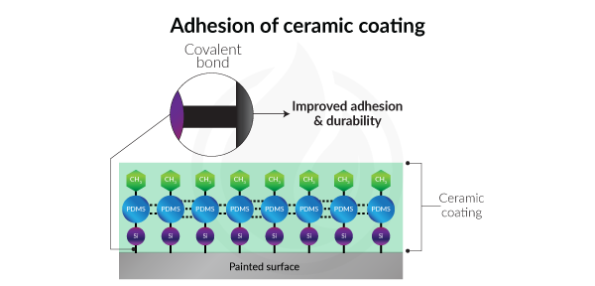
How does PDMS, with its particular characteristics such as its hardness, hydrophobicity, and resistance to chemicals, form a protective coating?
The curing process can begin when PDMS comes into touch with the moisture already present in the air. The process of curing takes a very long time and is often sped up by the presence of catalysts. In most cases, the ceramic coating is dry to the touch within a matter of hours, but the full curing process might take anywhere from five to seven days to complete. As the PDMS begins to hydrolyze, each PDMS monomer will start to bind together to form a longer chain. This will result in a surface that has a thin protective layer that is solid, despite its thickness. The hydrolysis reaction is depicted in the following image:
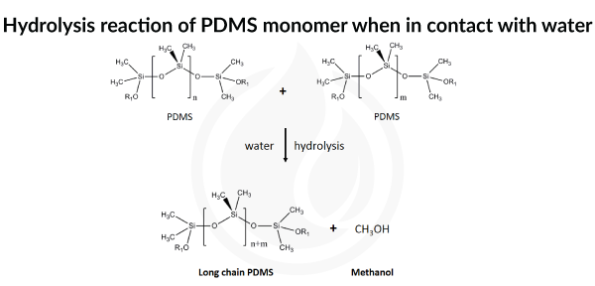
In the hydrolysis reaction, methanol (or any other alcohol compound) will be produced as a by-product of the reaction. The exact nature of this by-product will be determined by the grade of the utilised PDMS. This by-product is referred to as VOC, which stands for volatile organic compounds. The majority of coatings used in the industry have a pungent odour; however, the coatings formulated by Motor Headz either have a very low VOC content or none at all. This results in fewer emissions of VOC by-products during the curing process.
The amount of crosslinking agents used in the formulation is directly related to the level of hardness achieved by the PDMS-based ceramic coating. If the ceramic coating system does not contain a crosslinking agent, the monomer of the PDMS will tend to react along the main chain, forming a longer chain with just a small amount of crosslinking. This produces coatings with a degree of hardness that is somewhere in the middle. This coating system is typically offered on the market as one-component (1-K) goods with a longer pot life.
Note: The term “pot-life” refers to the time during which the combination can still be used effectively.
In the following illustration, the formation of intermolecular linkages between neighbouring PDMS chains when a crosslinking agent is added.
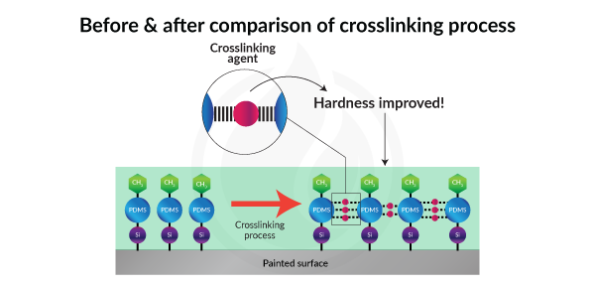
However, the pot-life of PDMS, when combined with a crosslinking agent, is extremely constrained (a few hours to 1 day). For this reason, the formulator is essential to formulate a coating with two distinct components (2-K), to prevent an early reaction from occurring while the coating is being stored. The final consumer must combine the two parts of a 2-K product on their own.
During the curing phase, when the -Si-O-Si link is created, the hydrophobicity of the PDMS-based ceramic coating is generated.
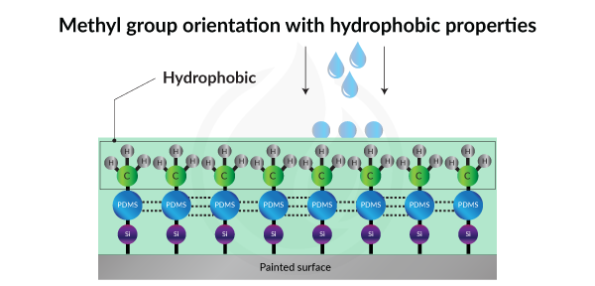
During the curing process, the methyl groups will be aligned facing the coating surface, as illustrated in the following image. This will result in a superior hydrophobic and water-repellent characteristic. The water contact angle might range anywhere from 91 degrees to 120 degrees, depending on the specific formulation of the ceramic coating.
Because the ceramic-coated surface is hydrophobic, most contaminants, such as dirt, bug stains, and bird droppings, cannot permeate the ceramic-coated surface. As a result, the ceramic-coated surface is much simpler to clean and maintain.
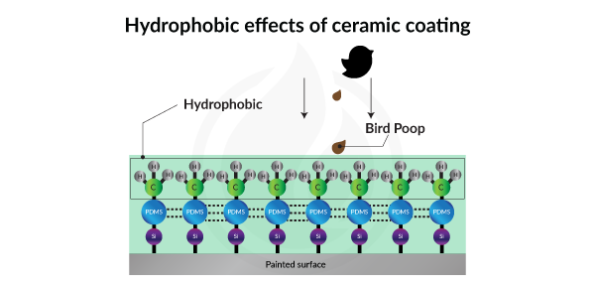
In addition, PDMS is renowned for its lack of reactivity to chemicals and its exceptional resilience to heat and ultraviolet light. Its high degree of crosslinking density is one factor that contributes to its resilience to chemicals. Ceramic Coatings are designed to resist caustic, strong acids and solvents like gasoline and diesel. Ceramic coatings offer other benefits, including the prevention of colour fading brought on by ultraviolet (UV) radiation, which is known to destroy the pigment in painted surfaces such as automobiles and buildings.
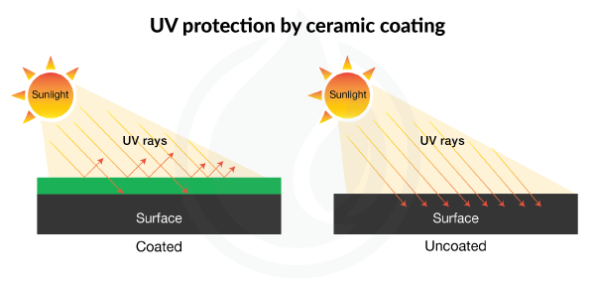
Ceramic Coatings are uniform in that each one is built with particular qualities in mind, such as a high level of durability, hydrophobicity, and hardness. The formulation of any unique coating and the objective it was developed to fulfil will determine the degree to which that coating exhibits the qualities common to all coatings. For example, Motor Headz 10H Ceramic Coating is a particular formulation with a hardness of 10H (on the pencil scale). It has a gloss similar to silk, a water contact angle of 120 degrees, and a longer durability period. These are its major properties. Quick Polish, on the other hand, is constructed to withstand high heat and to have greater endurance and hardness.
To learn more about the coatings we produced, formulated and manufactured by Motor Headz, visit www.motorheadz.in for more information. You can also email us at [email protected] for further requests and articles.

